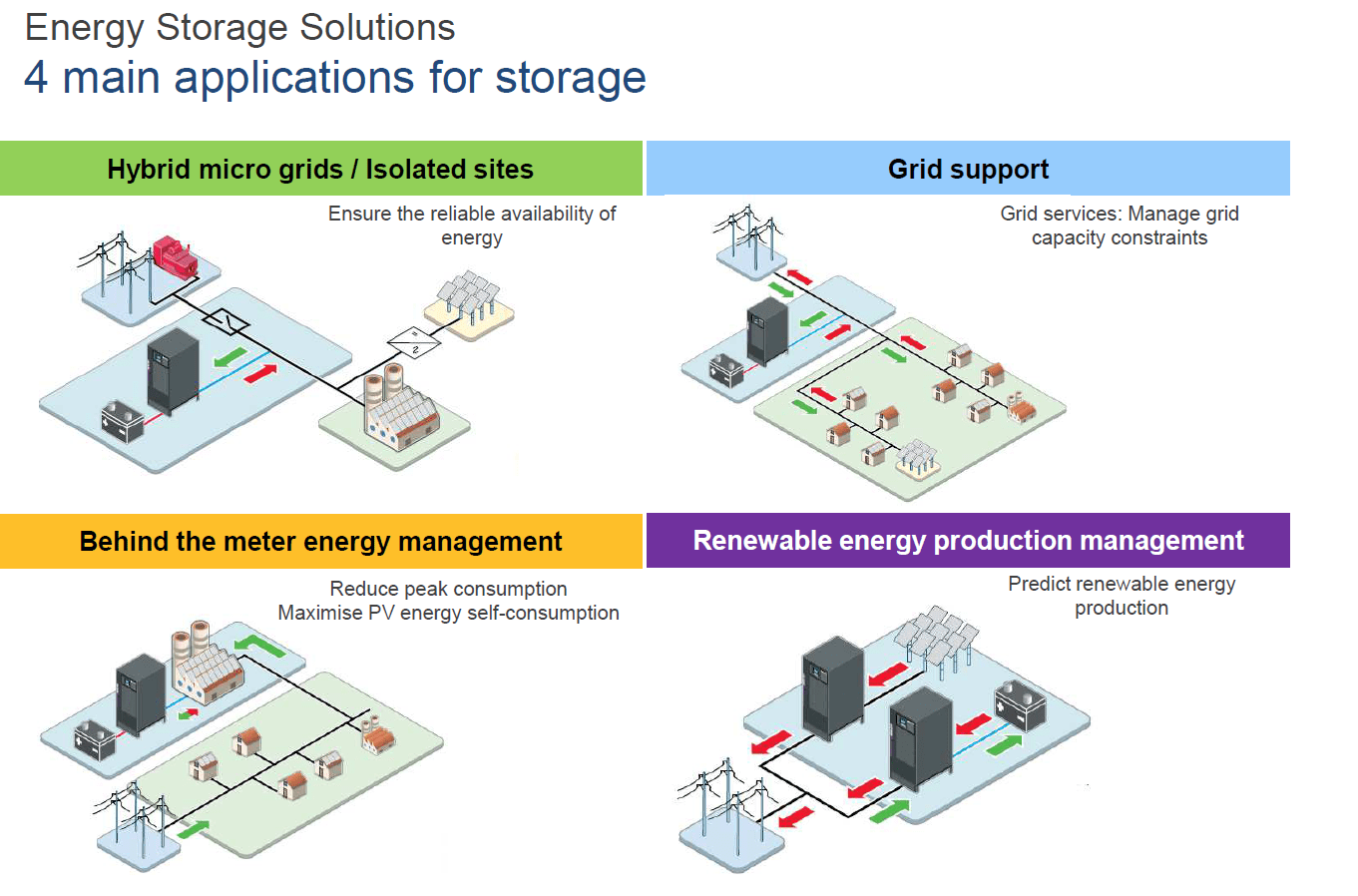There are three primary benefits of energy storage:
- Access to lower priced electricity
- Retention of surplus self generated electricity
- Emergency power supply
However, this can look many different ways. At a recent presentation*, we had an interesting view of the main applications of battery storage that may help explain some of the questions. In this blog, I comment on each of these application areas, and discuss their relevance for commercial and domestic applications.

This is a big topic, so for each application area, I shall try to answer just three points of importance:
- What it is and why you would do it
- Technical considerations
- The primary financial drivers
Hybrid Micro-Grids / Isolated Sites
- What and why: A self contained energy system that can be connected to the grid dynamically, or be permanently off-grid. Primarily a commercial application. Scale can vary enormously from an off-grid summer holiday cottage, to a guaranteed supply for a factory.
- Technical: If connected to the grid, it requires the ability to connect/disconnect from the grid in a safe and consistent way i.e. being able to provide the voltage frequency on site while disconnected, and being able to synchronise back to the grid on re-connection.
- Financial: If power must be available, then the output of the system (factory, rental cottage) will decide the economics. While connected to the grid, it can be considered akin to behind the meter energy management (see below).
Grid Support
- What and why: A managed mix of sources (solar/wind) and sinks (batteries) that the grid can call on at short notice to draw or dump energy to. Currently these are large commercial resources, but work is underway developing the technical and commercial framework to allow aggregated home generation units and batteries to become virtual sources and sinks.
- Technical: The grid is a network and needs to be balanced. Too much energy and the frequency rises, too little and the frequency drops. Since it is very hard to predict any particular demand, it can only be managed in reaction to actual demand.
- Financial: These storage solutions provide the Frequency Response and Capacity response needs of the grid and are paid via contracts with the grid.
Behind the Meter Energy Management
- What and why: Both domestic and commercial sites can have mixed generation and storage on the private side of the meter. From the grid’s perspective it only sees net surplus come to the grid, and net deficit be demanded of the grid.
- Technical: New sources and sinks must be registered with the grid so that the overall system balance can be managed. Not all locations can cope with new generation sources.
- Financial: This is the current main domestic model in which money is generated by the FIT tariff, and can also be saved by storing off-peak energy which can be used at peak times.
mhaprang / 123RF Stock Photo” width=”600″ height=”449.8122653316646″ style=”width: 600px; display: block; margin: 0px auto;”>
Renewable Energy Production Management
- What and why: When you see large solar and wind farms, these are commercial ventures to generate renewable energy. Storage is required to control when the energy is fed into the grid.
- Technical: Currently in the West Country, pure generation plants are not being licenced as the grid cannot cope with the peak generation at the times they are available (solar during the day, wind during windy periods). By combining them with storage capacity, the energy can be controlled and fed into the grid at times of maximum demand.
- Financial: By using storage to time shift in this way, it not only helps the grid manage overall load balancing, but also allows the commercial enterprise to benefit from peak prices for their energy.
*material drawn from an original presentation by Dr Richard Govier, the Technical Director of Socomec, and reproduced with kind permission. All errors are my own. Previous blogs in this series are: